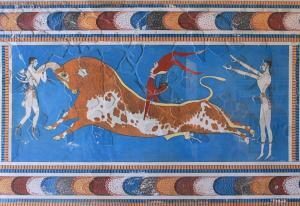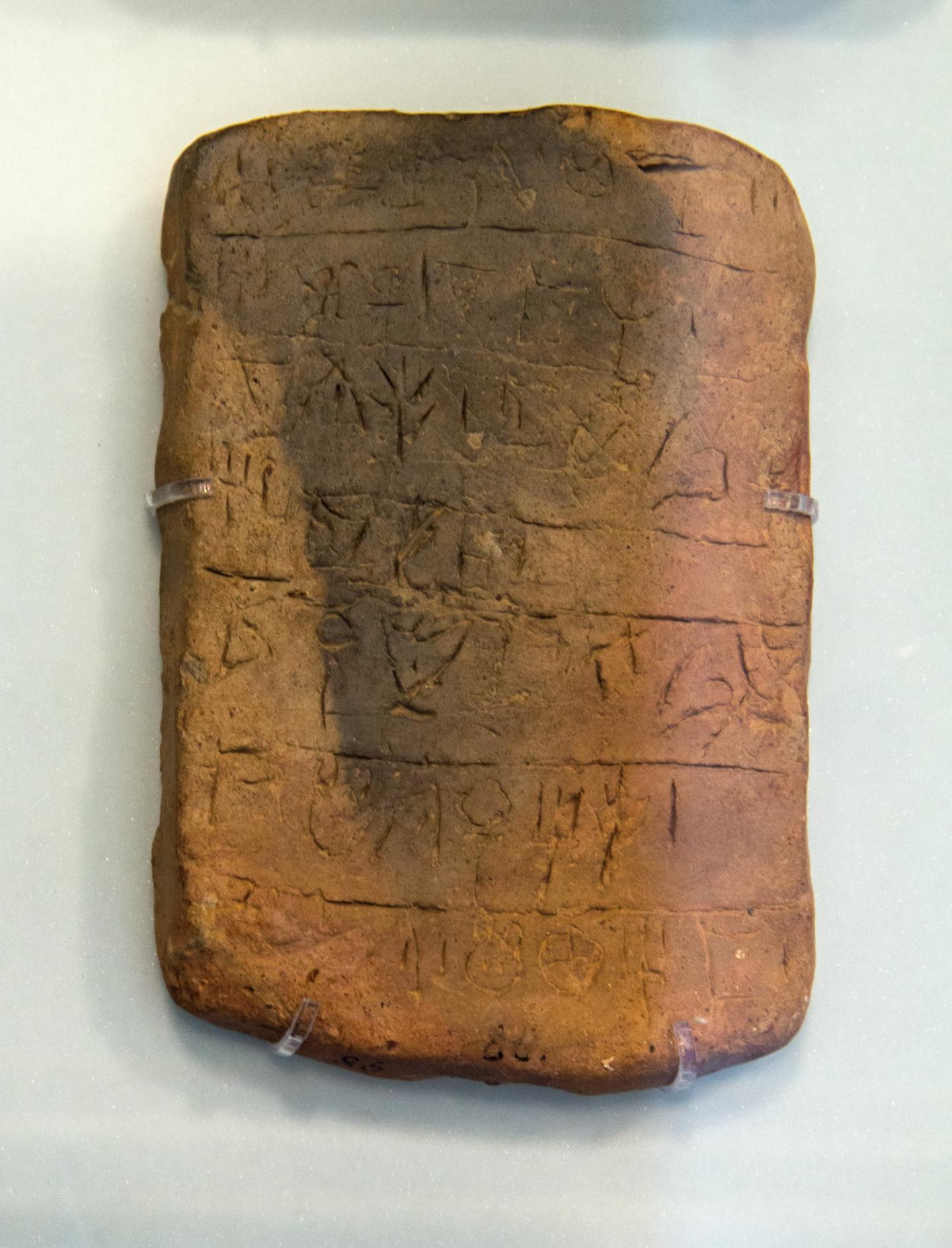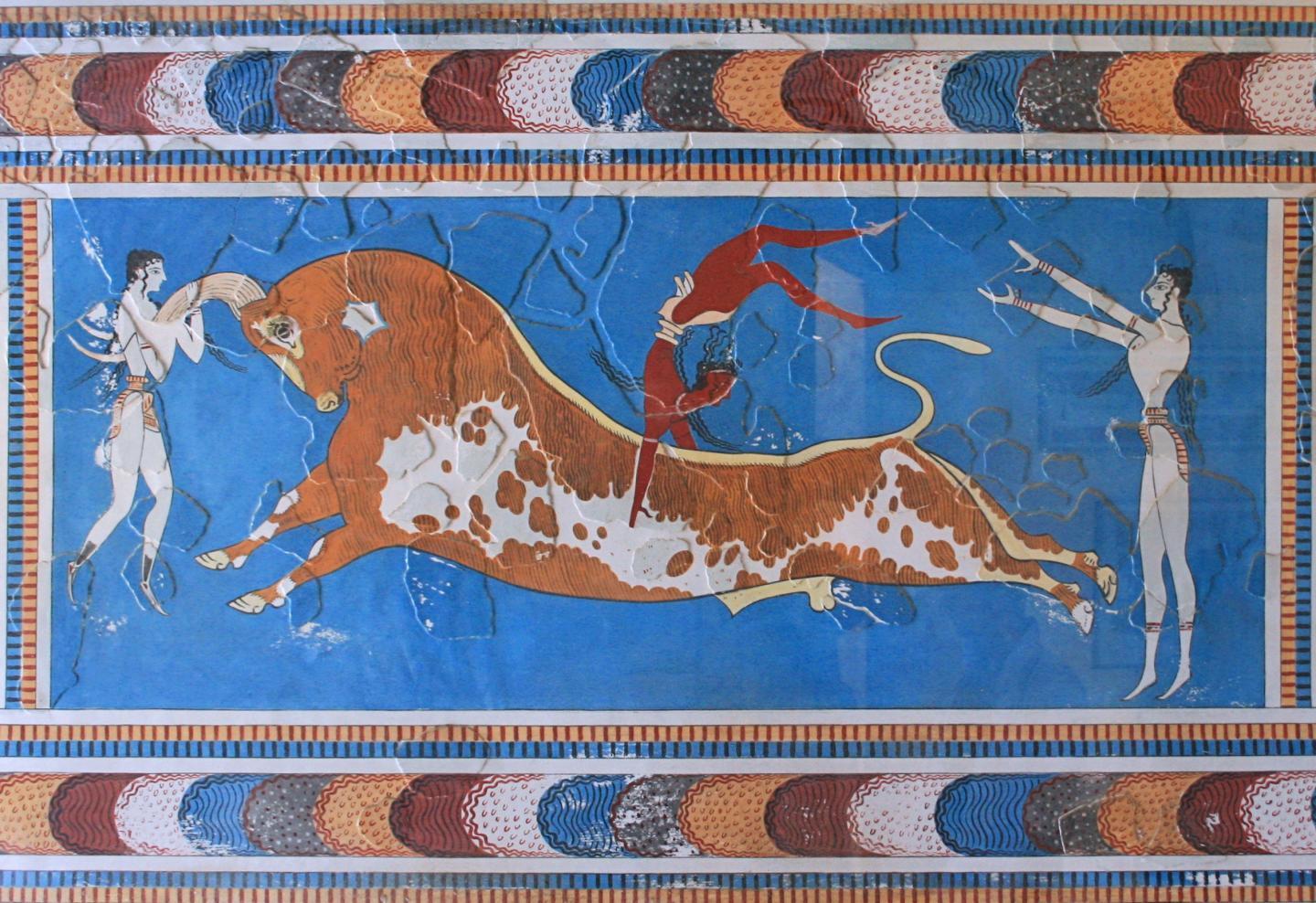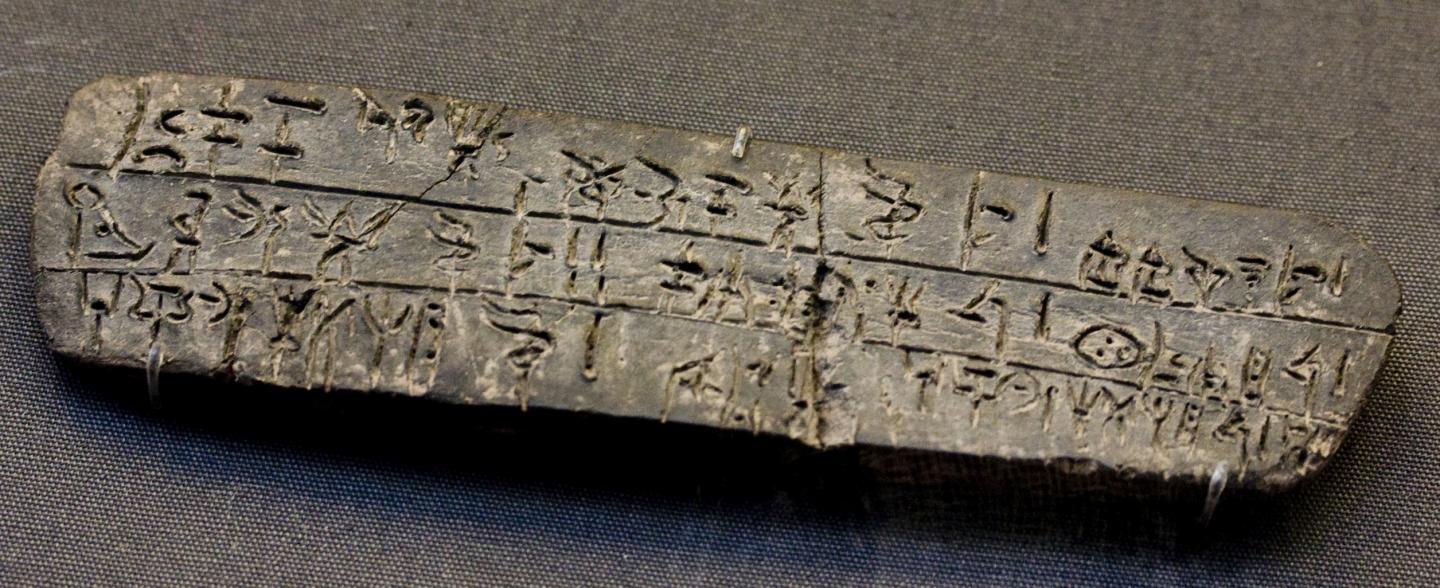
MAX PLANCK INSTITUTE FOR THE SCIENCE OF HUMAN HISTORY, UNIVERSITY OF WASHINGTON HEALTH SCIENCES/UW MEDICINE and the HOWARD HUGHES MEDICAL INSTITUTE—An analysis of ancient DNA has revealed that Ancient Minoans and Mycenaens were genetically similar with both peoples descending from Neolithic Anatolian and Aegean farmers who likely migrated to Greece and Crete.
The Minoan Civilization and its counterpart on the Greek Mainland, the Mycenaean Civilization, were Europe’s first literate societies and the cultural ancestors of later Classical Greece. However, the question of the origins of the Minoans and their relationship to the Mycenaeans has long puzzled researchers. A paper* published today in Nature suggests that, rather than being recently arrived, advanced outsiders, the Minoans had deep roots in the Aegean. The primary ancestors of both the Minoans and Mycenaeans were populations from Neolithic Western Anatolia and Greece and the two groups were very closely related to each other, and to modern Greeks.
The Minoans and Mycenaeans occupy an important place in Greek, and European, history. The Minoan civilization (c. 2600 to 1100 BC) has been described as the first literate society in Europe, with their Linear A script. Because Linear A, and the hieroglyphic scripts used on Crete, were never deciphered, the origins of the language they represent are not clear but it is thought to be distinct from early Greek. Minoan Crete is the setting for many Greek legends and immediately conjures images of the Labyrinth and the Minotaur. The Mycenaean civilization (c. 1700 to 1050 BC) originated in mainland Greece eventually controlling the nearby islands, including Crete. Their Linear B script represented an early form of Greek.
Despite this rich archaeological and textual history, the origins of the Minoans have long puzzled researchers. Their cultural innovations, including the first European writing system, vast palace complexes, and vibrant art, seeming to spring up in isolation on Crete, have led to speculation that they moved to the area from a more advanced society in another location. The Mycenaeans, with their roots in mainland Greece, seem to have adopted much of the Minoan technology and culture, but it is not clear how they were related. Now, an international team of researchers from the University of Washington, the Harvard Medical School and the Max Planck Institute for the Science of Human History, together with archaeologists and other collaborators in Greece and Turkey, report the first genome-wide DNA sequence data on the Bronze Age inhabitants of mainland Greece, Crete, and southwestern Anatolia. “We wanted to determine if the people who made up the Minoan and Mycenaean populations were actually genetically distinct or not. How were they related to each other? Who were their ancestors? And how are modern Greeks related to them?” says Johannes Krause, director at the Max Planck Institute for the Science of Human History and one of the corresponding authors of the study.
To answer these questions, the researchers analyzed genome-wide data from 19 individuals, including Minoans, Mycenaeans, a Neolithic individual from mainland Greece, and Bronze Age individuals from southwestern Anatolia, which they were able to recover despite the notoriously poor preservation in the Mediterranean. More specifically, the ancient DNA, carefully extracted from bones and teeth, included 10 Minoans, four Mycenaeans, three individuals from southwest Anatolia (Turkey), an individual from Crete that dates from after the arrival of the Mycenaeans on the island, and one Neolithic sample (5,400 BCE) from the mainland that predated the emergence of the Greek civilizations. The researchers then compared and contrasted the new DNA samples with previously reported data from 332 other ancient individuals, 2,614 present-day humans, and two present-day Cretans. The DNA samples were collected by Stamatoyannopoulos and his archaeologist collaborators, and were initially analyzed in his laboratory. Subsequently, Stamatoyannopoulos began collaborating with Johannes Krause of the Max Planck Institute, who undertook comprehensive genomic DNA sequencing using techniques developed in his laboratory, and P David Reich of Harvard Medical School, who worked with Iosif Lazaridis on collation and statistical genetic analysis of the data. By comparing the ancient DNA data with previously published data from nearly 3,000 others, both ancient and modern, the researchers were able to clarify the relationships between these groups.
The researchers found that the Minoans, rather than coming from a distant civilization, were locals, descended from the first Neolithic farmers of western Anatolia and the Aegean. They found that the Minoans and Mycenaeans were very closely related, but with some specific differences that made them distinct from each other. Both the Bronze Age Minoans and Mycenaeans, as well as their neighbors in Bronze Age Anatolia, derived most of their ancestry from a Neolithic Anatolian population, and a smaller component from farther east, related to populations in the Caucasus and Iran.
A passion for history inspired Stamatoyannopoulos to initiate this project: “For over 100 years, many hotly contested theories have circulated concerning the origin of the inhabitants of Bronze Age, Classical, and modern Greece, including the so-called ‘Coming of the Greeks’ in the late second millennium, the ‘Black Athena’ hypothesis of the Afroasiatic origins of Classical Greek civilization, and the notorious theory of the 19th century German historian Fallmerayer, who popularized the belief that the descendants of the ancient Greeks had vanished in early Medieval times.”
While the new study does not resolve all the outstanding questions, it provides key answers. Importantly, the findings disprove the widely held theory that the Mycenaeans were a foreign population in the Aegean and were not related to the Minoans.
Previously unknown migration event?
It was previously believed that this eastern ancestry was brought to Europe by steppe pastoralists from the north, who themselves shared this eastern ancestry. However, although the Minoans have this eastern heritage, they do not show genetic heritage from the northern steppe populations. On the other hand, the Mycenaeans show evidence of both eastern and northern genetic heritage. This indicates that, at least in some cases, this eastern heritage from the Caucasus and Iran arrived in Europe on its own, perhaps in a previously unknown migration event. It also indicates that the migration of the northern steppe pastoralists reached as far as mainland Greece, but did not reach the Minoans on Crete.
The study helps to provide boundaries on the timing of the arrival of both the eastern and the northern ancestry. “Neolithic samples from Greece, down to the Final Neolithic, approximately 4100 BC, do not possess either type of ancestry, suggesting that the admixture we detect probably occurred during the 4th-2nd millennium BCE time window,” explains David Reich of Harvard Medical School and the Broad Institute and a co-corresponding author of the study. To determine the timing of these events more precisely, further samples from broader time periods and geographic locations will be necessary.
Modern Greeks closely related to ancient Mycenaeans
While they are not identical to the Bronze Age populations, modern Greeks are genetically closely related to the Mycenaeans. Modern Greeks show some additional admixture with other groups and a corresponding decrease in heritage from the Neolithic Anatolians. This suggests that there has been a large degree of population continuity in Greece, but it has not been isolated.
“It is remarkable how persistent the ancestry of the first European farmers is in Greece and other parts of southern Europe, but this does not mean that the populations there were completely isolated. There were at least two additional migrations in the Aegean before the time of the Minoans and Mycenaeans and some additional admixture later. The Greeks have always been a ‘work in progress’ in which layers of migration through the ages added to, but did not erase the genetic heritage of the Bronze Age populations,” stated Iosif Lazaridis of Harvard Medical School, a lead author of the study.
The findings help to clarify some aspects of the relationships in Bronze Age Greece, but leave other questions open. The scientists hope to clarify the time period of this possible new influx of eastern genetic heritage, and the logistics of the arrival of northern steppe heritage – slowly over time, or in a mass migration – in future research.
____________________________________
Linear A inscription on a clay tablet from Crete, probably 15th century BC. (Archaeological Museum of Heraklion) Because Linear A, and the hieroglyphic scripts used on Crete, were never deciphered, the origins of the language they represent are not clear but it is thought to be distinct from early Greek. Credit: By Zde – Own work, CC BY-SA 4.0, https://commons.wikimedia.org/w/index.php?curid=52832727
_____________________________________________
The Bull-Leaping-Fresco from the Great Palace at Knossos, Crete. (The original is located at Heraklion Archaeological Museum, Heraklion, Crete) Credit: By Lapplaender – Own work, CC BY-SA 3.0 de, https://commons.wikimedia.org/w/index.php?curid=5880046
____________________________________
Clay tablet, dated to 1450-1375 BC, inscribed with Linear B script. The Linear B script of the Mycenaen civilization (c. 1600 to 1100 BC) represented an early form of Greek. It was descended from the still undeciphered older Linear A script from the Minoan civilization (c. 2600 to 1100 BC). Credit: By vintagedept – Flickr: Clay Tablet inscribed with Linear B script, CC BY 2.0, https://commons.wikimedia.org/w/index.php?curid=17430575
________________________________________________
Article Source: Adapted and edited from the MAX PLANCK INSTITUTE FOR THE SCIENCE OF HUMAN HISTORY , the UNIVERSITY OF WASHINGTON HEALTH SCIENCES/UW MEDICINE , and the HOWARD HUGHES MEDICAL INSITUTE news releases.
________________________________________________
*Genetic origins of the Minoans and Mycenaeans Authors: Iosif Lazaridis, Alissa Mittnik, Nick Patterson, Swapan Mallick, Nadin Rohland, Saskia Pfrengle, Anja Furtwängler, Alexander Peltzer, Cosimo Posth, Andonis Vasilakis, P.J.P. McGeorge, Eleni Konsolaki-Yannopoulou, George Korres, Holley Martlew, Manolis Michalodimitrakis, Mehmet Özsait, Nesrin Özsait, Anastasia Papathanasiou, Michael Richards, Songül Alpaslan Roodenberg, Yannis Tzedakis, Robert Arnott, Daniel M. Fernandes, Jeffery R. Hughey, Dimitra M. Lotakis, Patrick A. Navas, Yannis Maniatis, John A. Stamatoyannopoulos, Kristin Stewardson, Philipp Stockhammer, Ron Pinhasi, David Reich, Johannes Krause, George Stamatoyannopoulos
Publication: Nature, DOI: 10.1038/nature23310
________________________________________________
Receive 30 days free access to the popular new CuriosityStream lineup of documentaries on science, history, nature, and technology as a new Popular Archaeology premium subscriber.
___________________________________________
Travel and learn with Far Horizons.
____________________________________________
This richly illustrated issue includes the following stories: Recent findings shedding new light on the whereabouts of the remains of Philip of Macedon, father of Alexander the Great; how an archaeologist-sculptor is bringing bones of the dead back to life; archaeologists uncovering town life at the dawn of civilization; an exclusive interview with internationally acclaimed archaeologist James M. Adovasio about what makes the Meadowcroft Rockshelter prominent in the ongoing search for the first Americans; what archaeologists are finding at the site of the ancient city of Gath, the home town of the biblical Philistine giant, Goliath; and how scientists are redrawing the picture of human evolution in Europe. Find it on Amazon.com.








